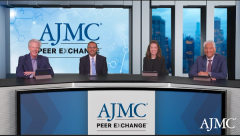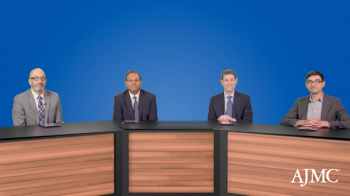
Guideline-Directed Medical Therapies in Heart Failure
Panelists discuss how guideline-directed medical therapy has evolved to include 4-pillar treatment for heart failure with reduced ejection fraction (angiotensin-converting enzyme inhibitors/angiotensin receptor‐neprilysin inhibitors, β-blockers, mineralocorticoid receptor antagonists, SGLT2 inhibitors) that can reduce mortality by up to 60% and extend life by 6 years, though significant implementation gaps remain, with only about one-third of eligible patients receiving appropriate therapy, necessitating rapid initiation of all 4 drug classes within weeks rather than sequential titration.
Episodes in this series

β-Blockers for Treatment of Heart Failure
β-blockers represent foundational therapy for heart failure with reduced ejection fraction, based on extensive clinical trial evidence demonstrating significant mortality reductions. The counterintuitive benefit of these agents—giving drugs that impair contractility to patients with reduced heart function—has been well established through rigorous research. Only specific evidence-based β-blockers should be used: carvedilol, bisoprolol, and metoprolol succinate, as other β-blockers have not demonstrated comparable benefits.
Selection among evidence-based β-blockers depends on individual patient characteristics. Carvedilol, with its balanced α and β blockade, may be preferred for patients with hypertension, while metoprolol succinate or bisoprolol might be better choices for patients with lower blood pressure or pulmonary disease concerns. The importance of using the correct agent in appropriate doses cannot be overstated, as non–evidence-based β-blockers may not provide the same clinical benefits.
The role of β-blockers in heart failure with preserved ejection fraction remains controversial and less well-defined. Historical reasoning suggested that heart rate reduction might improve diastolic filling time and outcomes, but retrospective analyses of major trials suggest β-blocker use may actually be associated with worse outcomes in patients with heart failure with preserved ejection fraction. This finding challenges previous assumptions and suggests potential overutilization of β-blockers in the preserved ejection fraction population, except when specifically indicated for conditions like atrial fibrillation, where clear benefits exist.
Newsletter
Stay ahead of policy, cost, and value—subscribe to AJMC for expert insights at the intersection of clinical care and health economics.










































